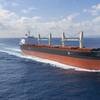Logistics Revenues Surpass Pre-recession Levels
The latest report from Ti, Global Transport and Logistics Financial Analysis 2013, reveals the winners and losers in the global logistics industry over what has been a tempestuous six year period.
Analyzing the financial accounts of 20 of the world’s largest publicly quoted express and logistics companies, the report tracks company performance in terms of revenues, profitability and other financial ratio indicators over the six years. The report reviews mainstream logistics activities on a combined basis as well as across three individual sectors – contract logistics, freight forwarding and freight and trucking. The report also evaluates the results of parcel operations in a separate section.
On an inflation adjusted basis, average revenues for the companies fell by more than 15 percent at the depth of the recession. On the same basis, average revenues are now only seven percent higher than they were 2007.
Analysis shows that throughout the whole period since March 2007, French-based logistics company, Norbert Dentressangle showed the most aggressive growth, more than doubling its revenues, largely through acquisition.
When examining the companies which have grown fastest since the market hit rock bottom in December 2009, Australian operator, Toll comes out top; increasing in size by about 50 percent. This growth was attributed to the company’s expansive strategy in the buoyant Asian market. In addition, US forwarder, CH Robinson and Damco, part of the shipping group A.P. Moller-Maersk, have grown at similar rates.
Margins over the six year period have also seen a rollercoaster ride. From a peak in 2007, they halved to 2.2 percent in December 2009 before regaining much of their ground. Worryingly though, margins have slipped for the last three consecutive quarters. The range of profitability is quite startling even for companies in the same sector. For instance, Expeditors achieved operating margins of 8.9 percet compared with Panalpina’s of just 0.6 percent.
According to the report’s author, David Bagshaw, recessionary pressures were made worse by the industry’s expansive growth in the early 2000s. “After a period of intense merger and acquisition activity, the major players were regrouping and the onset of the recession made their task more difficult and probably depressed profits further,” he commented. “Many players entered the recession with declining margins and, as the recession took hold, margins continued to fall.”
He added, “At the end of 2012, revenue levels in real terms are slightly above those at the beginning of 2007 when the recession set in, but profits are still below the levels achieved in 2007. Nor has the recovery of 2010 been sustained in 2011 with the mixed pattern continuing into 2012. The first half of the year saw growth recorded by a number of companies but towards the end of the year this has fallen away and for some companies margins have declined.”










